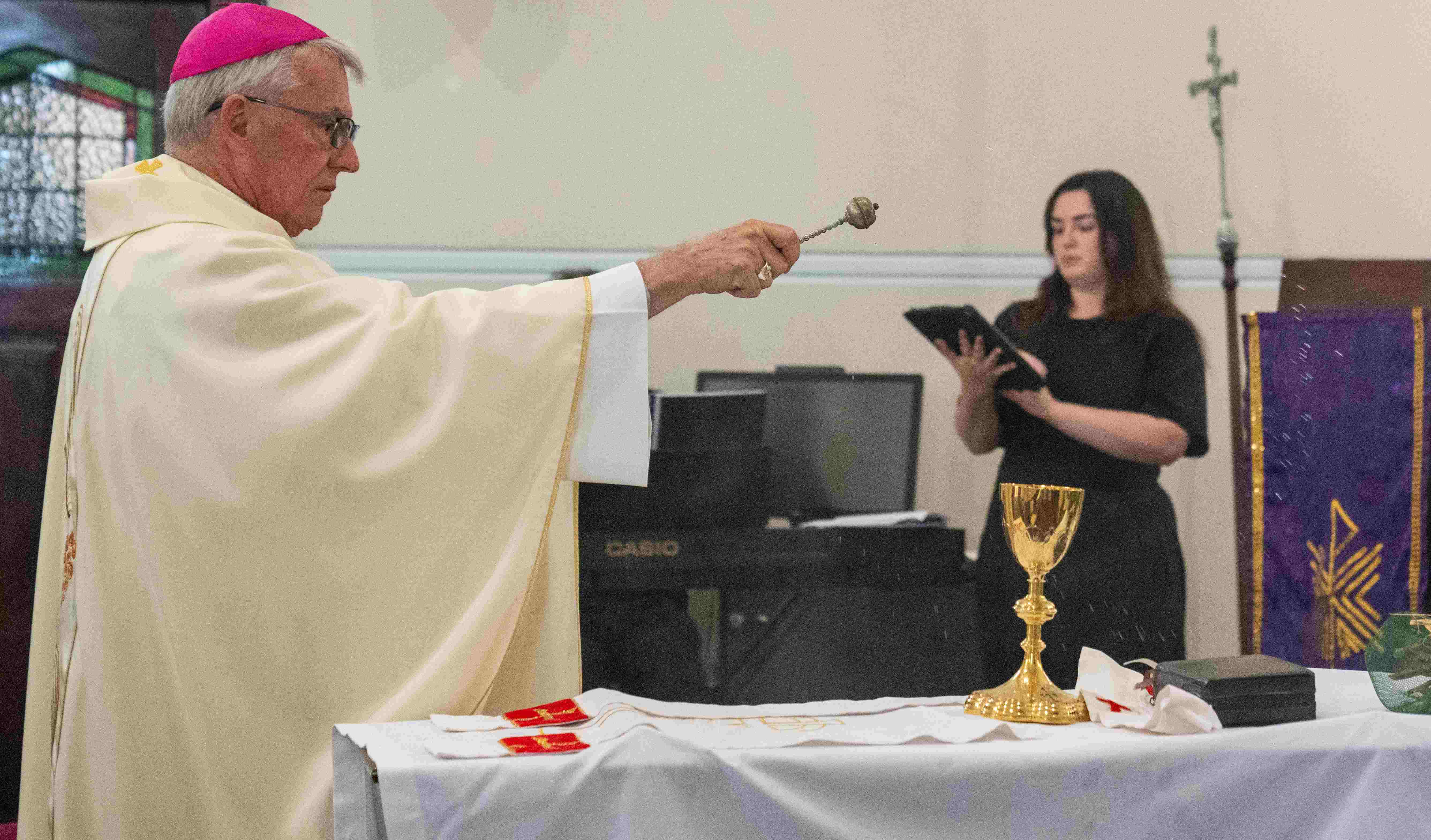Some Issues Regarding Funerals
National Liturgical Council

Funeral Notices
Funeral directors encourage the use of wording such as “The family and friends of N. are invited to a celebration of her life”. Certainly, we give thanks to God for the one who has died, but a Catholic funeral is about giving thanks above all for Christ who died and rose “so that we might have eternal life”. We offer praise and thanks that this person has been caught up in God’s saving love and celebrate the new life that God has called the deceased to share. It is puzzling that funeral notices still frequently use the out-dated term “Requiem Mass” instead of the correct titles “Funeral Mass” or “Funeral Liturgy”.
Eulogies
Multiple eulogies have become a feature of funerals, including those conducted in Catholic churches. Some people no longer attend funerals because they know that it is likely to last for up to two hours and include several long, repetitive, overly-emotional eulogies that unrealistically depict the deceased as an absolute saint.
The ritual book for Catholic funerals, called the Order of Christian Funerals, says this about eulogies:
A brief homily based on the readings should always be given at the funeral liturgy, but never any kind of eulogy. Through the homily, the community should receive the consolation and strength to face the death of one of its members with a hope that has been nourished by the proclamation of the saving word of God. A member or a friend of the family may speak in remembrance of the deceased before the final commendation begins.
A Catholic funeral needs to leave mourners with reason to hope, not just memories of the deceased. The funeral liturgy affirms that “in Christ, who rose from the dead, our hope of resurrection has dawned. The sadness of death gives way to the bright promise of immortality”.
Symbols
When the body of the deceased arrives at the door of the church for the Catholic funeral rites, the priest sprinkles the casket with holy water. If the body has been cremated, the remains are sprinkled. Holy water is used whenever we enter a church as a reminder of the sacrament which gave us new birth. As the deceased enters the church for the final time, we sprinkle this faithful member of the community with holy water for the same reason.
After the sprinkling, a large white cloth, the pall, may be placed over the coffin. The pall recalls the baptismal garment with which we were robed at baptism as a sign of Christian dignity and instructed to bring that dignity unstained into the everlasting life of heaven. The funeral pall, then, reclothes the body in baptismal white to remind us of our hope in the resurrection.
The Easter (Paschal) candle, symbol of the risen Christ, is placed beside the coffin during a funeral.
Music
Clergy and others involved in preparing Catholic funerals have to very carefully tread the path between being pastoral and ensuring that the focus of funerals is on commending the deceased to God, as our faith demands. While a place might be found for an appropriate secular song at a Catholic funeral, it is the message of Christian hope that should predominate in the music chosen.
The Order of Christian Funerals (OCF) explains that “Music has the power to console and uplift the mourners and to strengthen the unity of the assembly in faith and love. Music chosen should express the paschal mystery of Jesus and relate to the readings from scripture” (OCF 30, 31).
The OCF encourages parishes to ensure that an organist or other instrumentalist, a cantor, and if possible a choir assist the assembly’s full participation in singing the songs, responses, and acclamations at funerals.
Secular music which had a special significance for the deceased person is best used at the Vigil, particularly during the time of sharing memories about the deceased person. It is also appropriate to use such music after the funeral liturgy, when family and friends gather to continue their remembering of their loved one.
Issues surrounding music at funerals need to be resolved through sensitive pastoral dialogue with the bereaved. Imposing rules without explanation can give offence.
Cremation
While it is permissible to celebrate the funeral liturgy in the presence of the cremated remains, it is recommended that the cremation occur after the funeral liturgy because an important sign in the funeral liturgy is the body of the deceased Christian who was created in the image and likeness of God.
At the funeral liturgy, the body of the deceased Christian is brought to the church one last time. The casket is sprinkled with holy water and clothed in the white pall – a reminder of the baptismal garment. The body then rests near the paschal candle. Much of this symbolism is lost if the body is not present.
The Rite of Committal is the final stage of the Christian funeral – the moment of last good-byes and the reverent laying to rest of a loved one’s mortal remains. When the body is present, it may be taken to the crematorium at the conclusion of the funeral liturgy and the Rite of Committal celebrated there in the presence of family and friends, before the body is given over to the fire. Later, when the family is given the ashes, the cremated remains are reverently interred, again with family and a few friends present.
The Church teaches that cremated remains should be treated with the same respect given to the corporeal remains of a human body. This includes the use of a worthy vessel to contain the ashes, care and attention to appropriate transportation, and a final disposition. The cremated remains of a body should be buried in a grave or entombed in a mausoleum or columbarium. While Catholic teaching discourages the scattering of ashes, the local bishop can grant a dispensation if he judges that it will contribute to the spiritual good of the faithful (canon 87).
